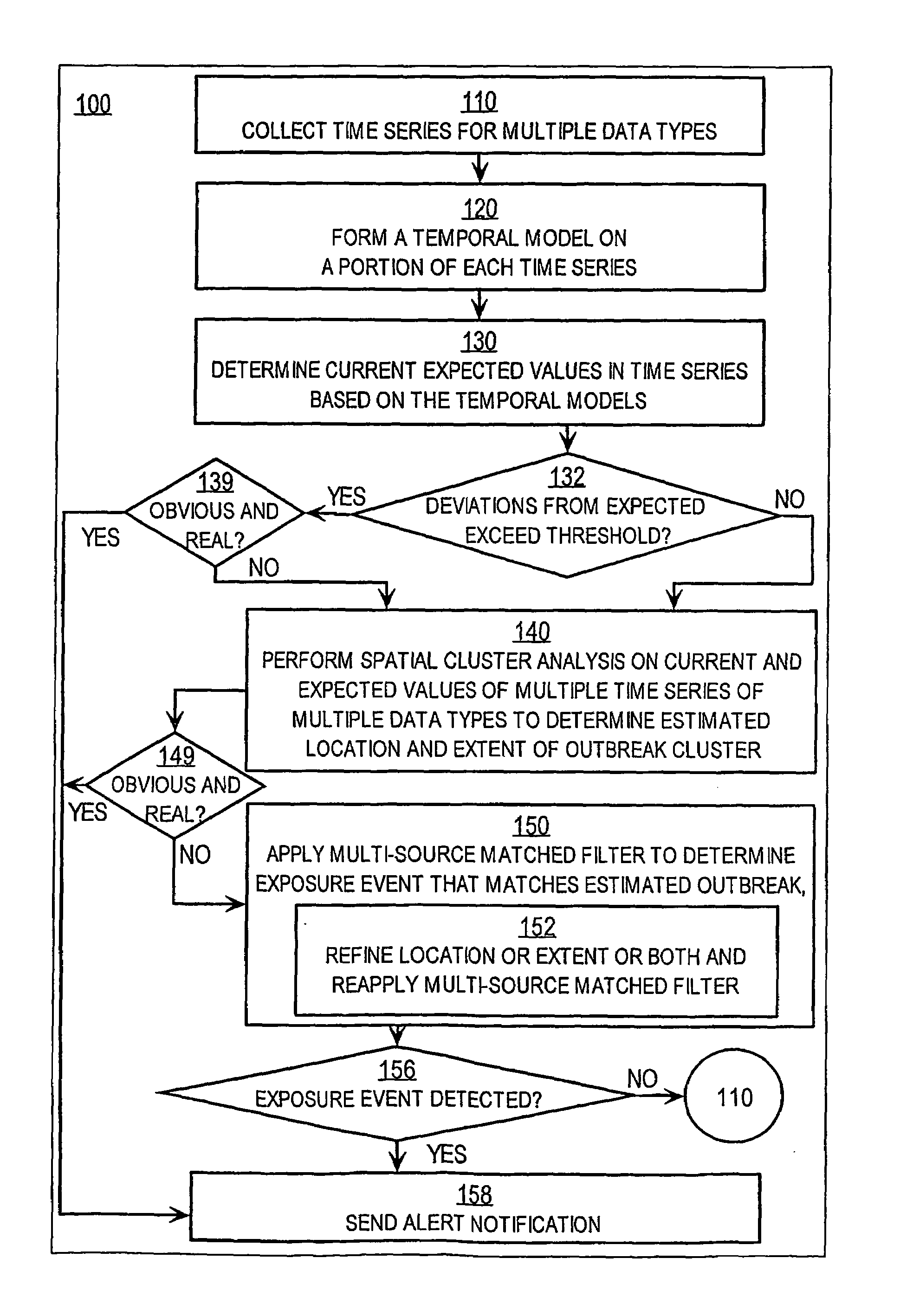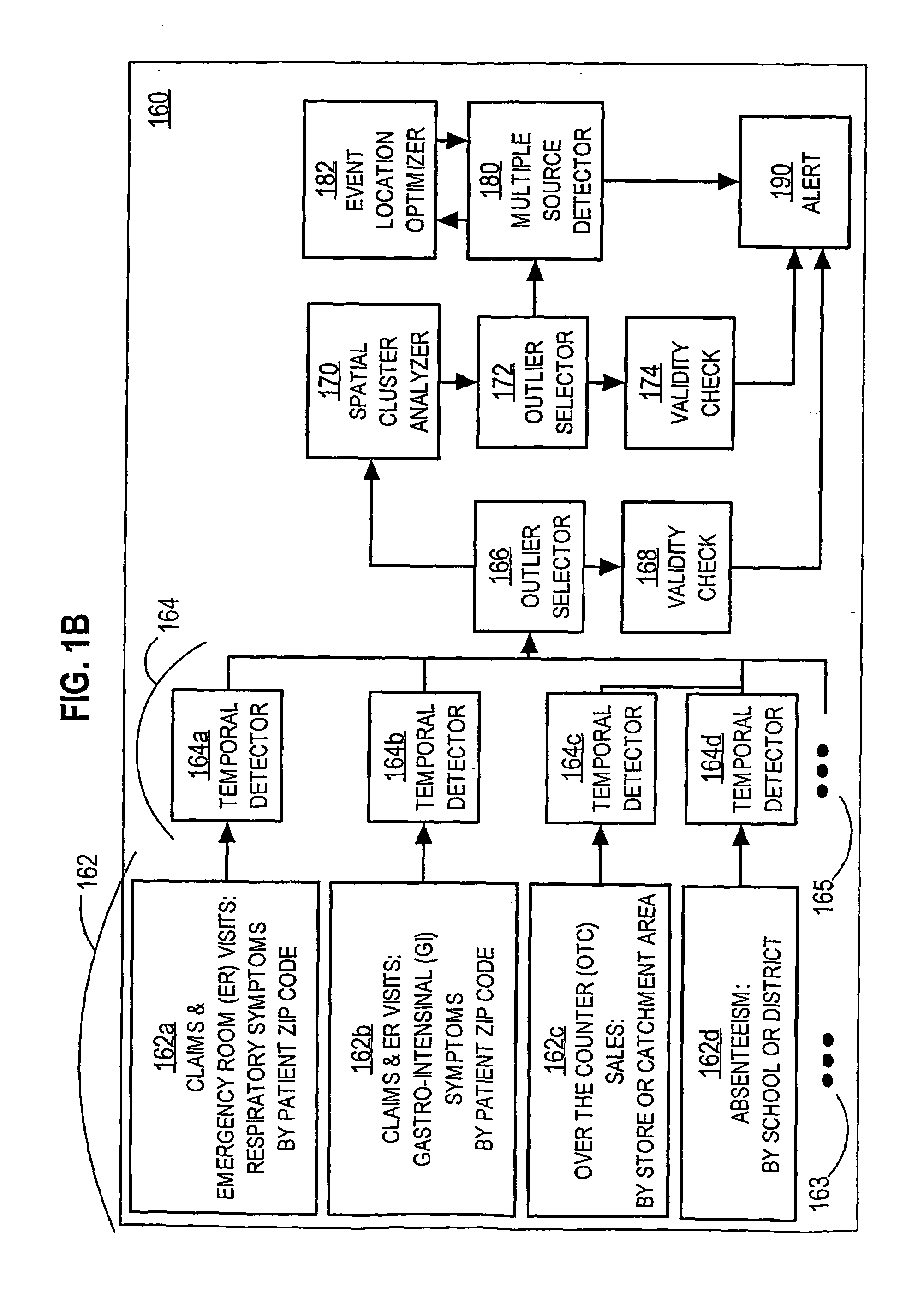Techniques for early detection of localized exposure to an agent active on a biological population
a technology of biological population and localized exposure, applied in the field of localized exposure detection to an agent active on a biological population, can solve the problems of clandestine release into a population, inability to treat the victim, and agents posing a particularly insidious threat, so as to avoid excessive consumption of resources and detect events quickly.
- Summary
- Abstract
- Description
- Claims
- Application Information
AI Technical Summary
Benefits of technology
Problems solved by technology
Method used
Image
Examples
Embodiment Construction
[0002]This invention was made with U.S. Government support under Defense Advanced Research Projects Agency (DARPA) Contract No. MDA972-96-D-0002. The U.S. Government has certain rights in the invention.
BACKGROUND OF THE INVENTION
[0003]1. Field of the Invention
[0004]The present invention relates to performing surveillance on a biological population for exposure to an agent that acts on members of that population; and in particular to the early detection of localized exposure using cluster analysis on anomalous conditions determined from time series of multiple data types.
[0005]2. Description of the Related Art
[0006]The past approaches described in this section could be pursued, but are not necessarily approaches that have been previously conceived or pursued. Therefore, unless otherwise indicated herein, the approaches described in this section are not to be considered prior art to the claims in this application merely due to the presence of these approaches in this background sectio...
PUM
 Login to View More
Login to View More Abstract
Description
Claims
Application Information
 Login to View More
Login to View More - R&D
- Intellectual Property
- Life Sciences
- Materials
- Tech Scout
- Unparalleled Data Quality
- Higher Quality Content
- 60% Fewer Hallucinations
Browse by: Latest US Patents, China's latest patents, Technical Efficacy Thesaurus, Application Domain, Technology Topic, Popular Technical Reports.
© 2025 PatSnap. All rights reserved.Legal|Privacy policy|Modern Slavery Act Transparency Statement|Sitemap|About US| Contact US: help@patsnap.com



